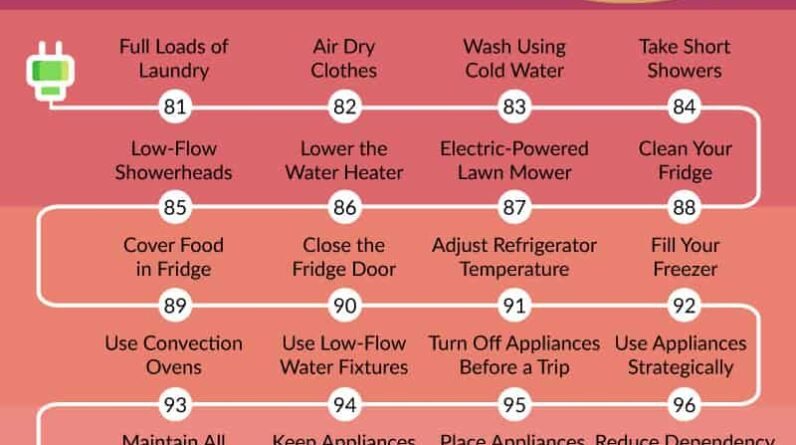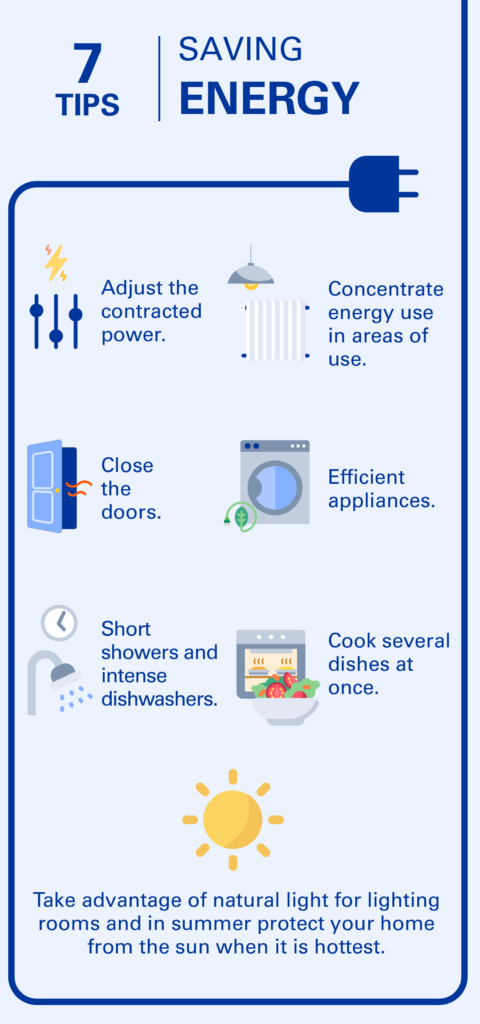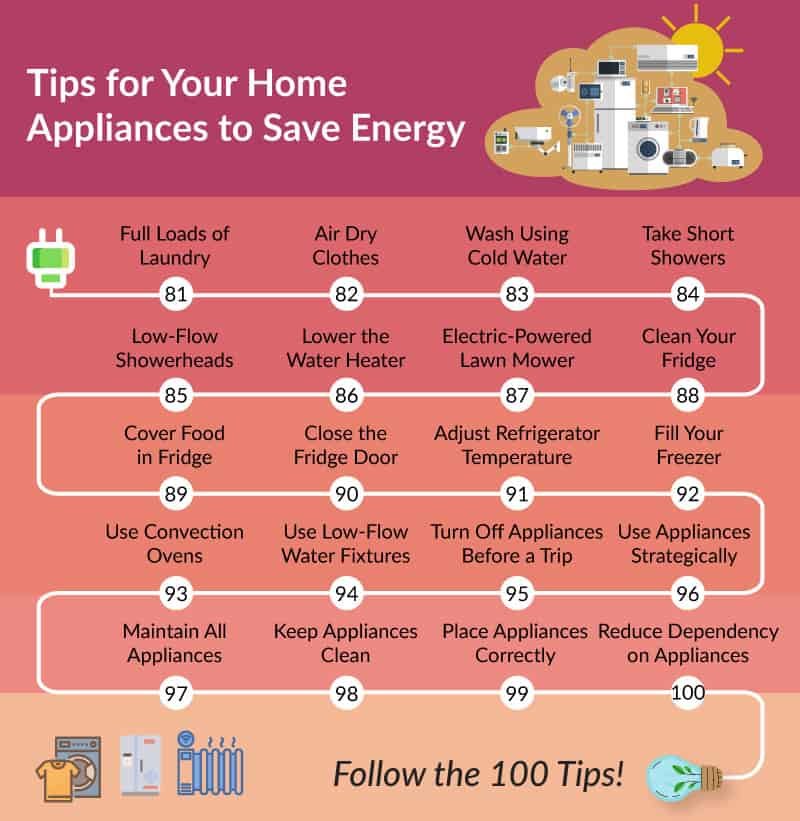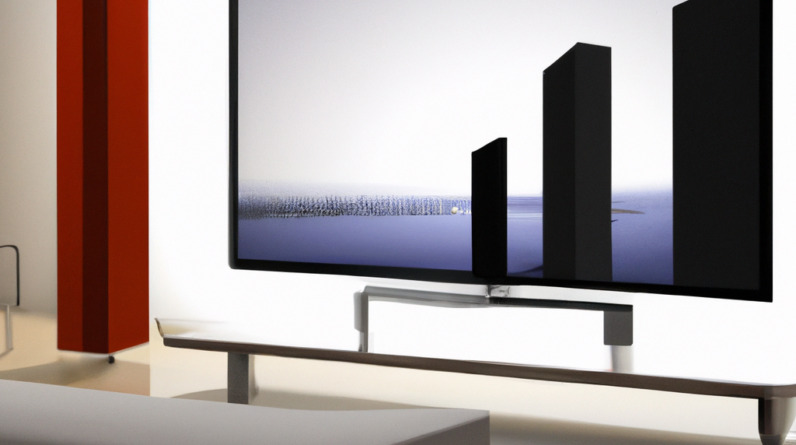
In today’s world, where energy consumption is a growing concern, finding ways to reduce your energy usage is essential. This article aims to provide you with practical and effective tips on how to decrease energy consumption with your home appliances. Whether it’s your refrigerator, washing machine, dishwasher, or any other household appliance, by implementing these simple suggestions, you can not only save money on your energy bills but also contribute to a greener environment.

This image is property of cdn.greenmatch.co.uk.
1. Choose Energy-Efficient Appliances
Choosing energy-efficient appliances is a great way to reduce your energy consumption and lower your utility bills. When shopping for new appliances, there are a few things you should consider:
1.1 Look for the ENERGY STAR Label
The ENERGY STAR label is a symbol that indicates the appliance meets strict standards for energy efficiency. Appliances with the ENERGY STAR label use less energy than their counterparts, which can save you money in the long run.
1.2 Consider the Energy Rating
Appliances often come with an energy rating, which provides an estimate of how much energy the appliance will consume. Look for appliances with higher energy ratings, as these are more energy-efficient and will help you reduce your energy consumption.
1.3 Opt for Inverter Technology
Inverter technology is commonly found in refrigerators, air conditioners, and washing machines. This technology allows the appliance to adjust its power consumption based on the specific requirements, resulting in better energy efficiency. Consider opting for appliances with inverter technology to save energy.
1.4 Select the Right Size Appliance
Choosing the right size appliance for your needs is essential to avoid wasting energy. Appliances that are too large for your household requirements will consume more energy than necessary. On the other hand, appliances that are too small may need to run longer to meet your needs, wasting energy in the process. Selecting the right size appliance is a crucial step in reducing energy consumption.
2. Proper Appliance Usage
Using your appliances wisely can also contribute to reducing energy consumption. Here are some tips for proper appliance usage:
2.1 Set the Temperature Wisely
Adjusting the temperature settings of your appliances can make a significant difference in energy consumption. For example, setting your refrigerator to the optimal temperature of 37-40 degrees Fahrenheit and your freezer to 0 degrees Fahrenheit can help reduce energy usage. Similarly, adjusting your thermostat by a few degrees can help you save energy on heating and cooling.
2.2 Use Appliances During Off-Peak Hours
Energy costs are often lower during off-peak hours, such as early mornings or late evenings. By using your appliances during these times, you can take advantage of lower electricity rates and reduce your energy consumption.
2.3 Avoid Frequent Start-Ups
Certain appliances, such as refrigerators and air conditioners, consume more energy when they start up. Therefore, try to avoid frequent start-ups by planning your appliance usage efficiently. For instance, avoid opening the refrigerator door frequently or turning the air conditioner on and off frequently.
2.4 Clean Appliances Regularly
Regular cleaning and maintenance of your appliances are essential for optimal performance and energy efficiency. Dirty appliances, such as clogged dryer vents or dusty refrigerator coils, have to work harder to function properly, resulting in increased energy consumption. Make sure to clean your appliances regularly to keep them running efficiently and reduce energy waste.
3. Optimize Refrigerator Energy Consumption
Refrigerators are one of the most energy-consuming appliances in a household. However, there are several ways you can optimize your refrigerator’s energy consumption:
3.1 Adjust the Temperature
As mentioned earlier, setting your refrigerator to the optimal temperature range of 37-40 degrees Fahrenheit can help reduce energy consumption. Avoid setting the temperature lower than necessary, as it will lead to increased energy usage.
3.2 Organize Your Fridge
Proper organization of the items in your refrigerator can make a difference in energy consumption. Avoid overcrowding the refrigerator, as it restricts airflow and makes the compressor work harder. Additionally, place items that need cooling closer to the back of the refrigerator, where it is colder.
3.3 Properly Seal the Fridge
Inspect the door seals of your refrigerator to ensure they are in good condition. Damaged or loose seals allow cold air to escape, resulting in energy waste. If you notice any issues with the door seals, replace them promptly to maintain optimal energy efficiency.
3.4 Avoid Placing Hot Food Inside
Placing hot or warm food directly into the refrigerator can increase the workload on the appliance’s compressor. Allow the food to cool down before storing it in the refrigerator to avoid unnecessary energy consumption.
4. Efficient Cooking Practices
Cooking is another area where you can reduce energy consumption with a few simple practices:
4.1 Use the Right-Sized Cookware
Using cookware that matches the size of the burner or heating element ensures efficient heat transfer and minimizes energy waste. Avoid using oversized pots or pans on small burners, as it leads to heat loss.
4.2 Match Pot Size to Burner
Similar to using the right-sized cookware, match the size of the pot or pan to the burner size. Using a small pot on a large burner wastes energy and can lead to uneven cooking.
4.3 Utilize Residual Heat
After turning off the heat on your stove or oven, take advantage of the residual heat to finish cooking or keep food warm. This can save energy and reduce cooking time.
4.4 Cook Multiple Dishes Simultaneously
If you have multiple dishes to cook, try to plan and use the oven or stovetop efficiently. By cooking multiple dishes simultaneously, you can make the most of the energy used and reduce overall energy consumption.

This image is property of abora-solar.com.
5. Laundry Energy Saving Tips
Laundry is a regular chore in most households, and it’s an area where energy consumption can add up. Here are some energy-saving tips for laundry:
5.1 Wash with Cold Water
Using cold water for laundry instead of hot or warm water can significantly reduce energy consumption. The majority of the energy used in washing machines goes towards heating the water, so opting for cold water whenever possible is an excellent energy-saving practice.
5.2 Opt for Full Loads
Washing smaller loads of laundry more frequently wastes both water and energy. Opt for full loads whenever possible to maximize the efficiency of your washing machine and reduce energy consumption.
5.3 Air Dry When Possible
Take advantage of sunny days by air drying your clothes instead of using a dryer. Hanging clothes outside to dry not only saves energy but also helps preserve the quality of your clothing.
5.4 Clean the Dryer Lint Trap
Cleaning the lint trap of your dryer after every use is crucial for maintaining optimal performance and energy efficiency. A clogged lint trap restricts airflow, making the dryer work harder and consume more energy.
6. Effective Dishwashing Techniques
Dishwashers are convenient appliances, but they can also be energy-intensive if not used efficiently. Here are some tips for effective dishwashing:
6.1 Scrape, Don’t Rinse
Before loading your dishwasher, scrape off excess food from dishes instead of rinsing them under running water. Pre-rinsing dishes wastes water and energy. Most modern dishwashers are designed to handle food remnants, so a quick scrape is usually sufficient.
6.2 Utilize Energy-Saving Features
Many dishwashers feature energy-saving options, such as eco-mode or air-dry settings. Utilize these features to reduce energy consumption. Additionally, running the dishwasher with a full load is more energy-efficient than running it with only a few items.
6.3 Load the Dishwasher Efficiently
Properly loading your dishwasher ensures optimal cleaning and energy efficiency. Avoid overcrowding the dishwasher, as it can restrict water and detergent distribution. Refer to the manufacturer’s guidelines for the best loading practices.
6.4 Skip the Heated Dry Option
Instead of using the heated dry option, open the dishwasher door after the wash cycle is complete and allow the dishes to air dry. This saves energy and also prevents heat damage to plastic items.

This image is property of downloads.beko.co.uk.
7. Standby Power Reduction
Standby power, also known as vampire power, refers to the energy consumed by appliances and electronics even when they are in standby or idle mode. Here’s how you can reduce standby power consumption:
7.1 Unplug Unused Appliances
When appliances are not in use, unplug them to eliminate standby power consumption. This includes devices like chargers, coffee makers, and gaming consoles.
7.2 Utilize Power Strips with Switches
Power strips with switches allow you to easily turn off multiple devices at once. Plugging devices into a power strip and switching it off when not in use can help eliminate standby power consumption.
7.3 Disable Standby Mode
For devices that have a standby mode, such as televisions and computers, check the settings and disable standby mode whenever possible. This ensures the device is completely turned off when not in use, saving energy.
7.4 Consider Smart Power Strips
Smart power strips are equipped with features that automatically cut off power to devices that are not in use or on standby. Consider investing in smart power strips to further reduce standby power consumption.
8. Lighting Efficiency
Improving the efficiency of your lighting can make a significant impact on your energy consumption. Here are some tips for lighting efficiency:
8.1 Switch to LED Bulbs
LED bulbs are more energy-efficient and have a longer lifespan compared to traditional incandescent bulbs. Consider switching to LED bulbs throughout your home to reduce energy consumption.
8.2 Utilize Natural Lighting
Take advantage of natural lighting during the day by opening curtains or blinds. Use daylight to illuminate your living spaces instead of relying solely on artificial lighting.
8.3 Install Dimmer Switches
Installing dimmer switches allows you to adjust the brightness of your lights according to your needs. Lowering the brightness of your lights when not necessary can help save energy.
8.4 Turn Off Lights When Not Needed
Encourage everyone in your household to turn off lights when they leave a room. Consistently practicing this habit can significantly reduce energy waste.

This image is property of www.endesa.com.
9. Manage Heating and Cooling
Heating and cooling your home efficiently can lead to significant energy savings. Here’s how you can manage heating and cooling effectively:
9.1 Set Thermostat Accordingly
Set your thermostat at moderate temperatures that provide comfort while minimizing energy usage. For heating, aim for around 68 degrees Fahrenheit, and for cooling, set the thermostat to around 78 degrees Fahrenheit.
9.2 Weatherproof Your Home
Properly insulating your home and sealing any air leaks can prevent heat loss during winter and reduce the workload on your heating system. Similarly, sealing air leaks and using shading techniques can keep your home cooler in the summer, reducing the need for excessive air conditioning.
9.3 Use Ceiling Fans Wisely
Utilize ceiling fans to enhance the effectiveness of your heating and cooling systems. In the summer, use fans to circulate cool air and create a breeze. In the winter, reverse the direction of the fans to push warm air down from the ceiling.
9.4 Regularly Maintain HVAC Systems
Schedule regular maintenance for your heating, ventilation, and air conditioning (HVAC) systems. Regular maintenance, such as cleaning filters and checking for any issues, ensures optimal efficiency and reduces energy consumption.
10. Reduce Energy Loss in Electronics
Electronic devices are prevalent in modern households, and reducing their energy consumption is essential. Here are some tips for reducing energy loss in electronics:
10.1 Enable Power Saving Modes
Many electronics have power-saving modes that can be enabled to reduce energy consumption. Make sure to activate these modes on your devices to save energy when they are not in use.
10.2 Turn Off or Hibernate Computers
When you’re not using your computer, turn it off instead of leaving it in standby mode. Additionally, enable the hibernate mode for laptops to reduce energy consumption when not in use for an extended period.
10.3 Adjust Screen Brightness
Lowering the screen brightness on your electronic devices, such as smartphones and tablets, can help reduce energy consumption. Adjust the brightness to a comfortable level that still allows you to see the screen clearly.
10.4 Don’t Overcharge Devices
Avoid overcharging your electronic devices, such as smartphones and laptops, as it can waste energy and potentially reduce battery life. Once your device reaches a full charge, unplug it to save energy.
By implementing these tips for reducing energy consumption with home appliances and electronics, you can make a positive impact on your energy bills and the environment. Remember, small changes in your daily habits and appliance usage can add up to significant energy savings over time.

This image is property of i0.wp.com.






